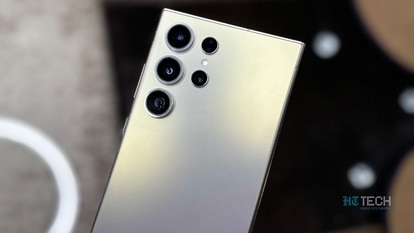Phoenix lands on Mars
Hours after the Phoenix Mars Lander softly landed in the Martian arctic plains, it dazzled scientists with the first-ever glimpse of the Red Planet’s high northern latitudes. Search for life | Mars factfile.
NASA's newest outpost in the solar system is a polygon-cracked terrain in Mars' northern polar region believed to hold a reservoir of ice beneath.
Hours after the Phoenix Mars Lander softly landed on Sunday in the Martian arctic plains, it dazzled scientists with the first-ever glimpse of the Red Planet's high northern latitudes.
A flood of images sent back by Phoenix revealed a landscape similar to what can be found in Earth's permafrost regions — geometric patterns in the soil likely related to the freezing and thawing of ground ice.
"This is a scientist's dream, right here on this landing site," principal investigator Peter Smith, of the University of Arizona, Tucson, said in a post-landing news conference.
Phoenix landed on Mars after a 10-month, 679 million-kilometre journey.
After a week checking out its science instruments, the lander will begin a 90-day digging mission to study whether the northern polar region possesses the raw ingredients needed for life to emerge.
Phoenix joins the twin rovers on the Martian surface, which have been exploring the equatorial plains since 2004. Unlike the mobile rovers, Phoenix was designed to stay in one spot and dig trenches in the soil.
Early indications show the lander is healthy, Nasa Jet Propulsion Laboratory project manager Barry Goldstein said.
The images confirm the lander unfurled its solar panels, hoisted its weather mast and unwrapped the protective covering of its 2.4 metre-long robotic arm. It will be several days before the arm will be unstowed.
"Everything just worked like a charm," said Goldstein, who kept up a Jet Propulsion Laboratory tradition by passing out bags of lucky peanuts on landing day.
Mission control erupted in cheers when a radio signal from Phoenix was detected after a hair-raising plunge through the atmosphere that required the lander to slow itself down from more than 19,300 kph to a 8 kph touchdown using a combination of friction, parachute and thrusters. Mission managers pumped their fists and hugged one another after the confirmation signal was received.
"They will be remembered forever that they are the first people to explore the polar region of Mars. There's no telling what discoveries would be seen over the next 90 days," Jet Propulsion Laboratory director Charles Elachi said.
It was the first successful soft landing on Mars since the twin Viking landers touched down in 1976. Rovers Spirit and Opportunity used a combination of parachutes and cushioned air bags to bounce to the surface four years ago. Phoenix avoided the fate of another polar explorer, the Mars Polar Lander, which crashed into the Martian south pole after prematurely shutting off its engines in 1999. Phoenix inherited the hardware of a lander that was canceled after the Polar Lander disaster and carried similar instruments flown on the ill-fated 1999 mission.
Phoenix's descent was nearly flawless. The only unexpected turn occurred when it opened its parachute seven seconds later than planned, causing the spacecraft to settle slightly downrange from the bull's-eye target, said Ed Sedivy, programme manager at Lockheed Martin Corp., which built the spacecraft.
Phoenix planted its three legs in a broad, shallow valley littered with pebble-size rocks that should not pose any hazard to the spacecraft, project managers said.
During its prime mission, Phoenix will dig through layers of soil to reach the ice, believed to be buried inches to 30 centimetres deep.
It will study whether the ice melted during a time in Mars' recent past and will analyse soil samples for traces of organic compounds, which would be a possible indicator of conditions favorable for primitive life. Phoenix is not equipped to detect past or present alien life. The $420 million Phoenix mission is led by University of Arizona and managed by the Jet Propulsion Laboratory.
Catch all the Latest Tech News, Mobile News, Laptop News, Gaming news, Wearables News , How To News, also keep up with us on Whatsapp channel,Twitter, Facebook, Google News, and Instagram. For our latest videos, subscribe to our YouTube channel.


























